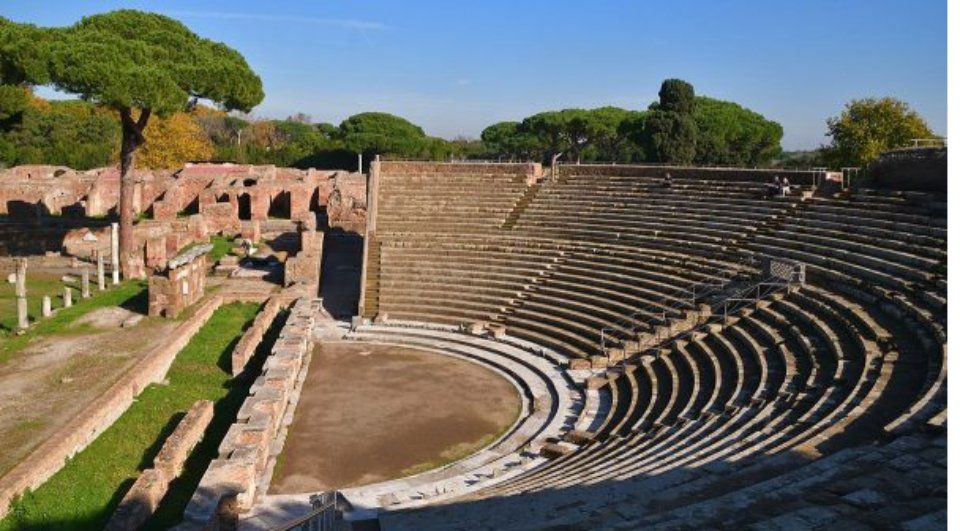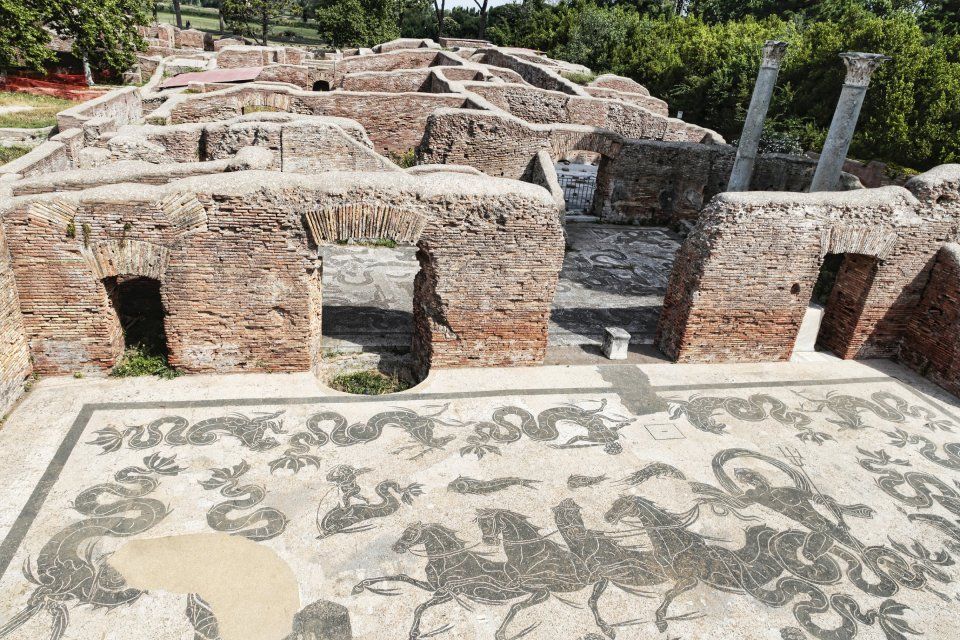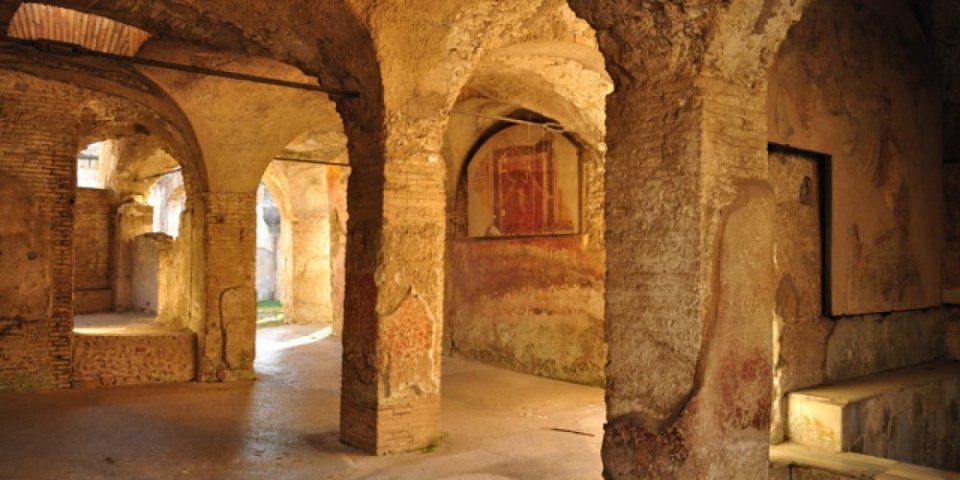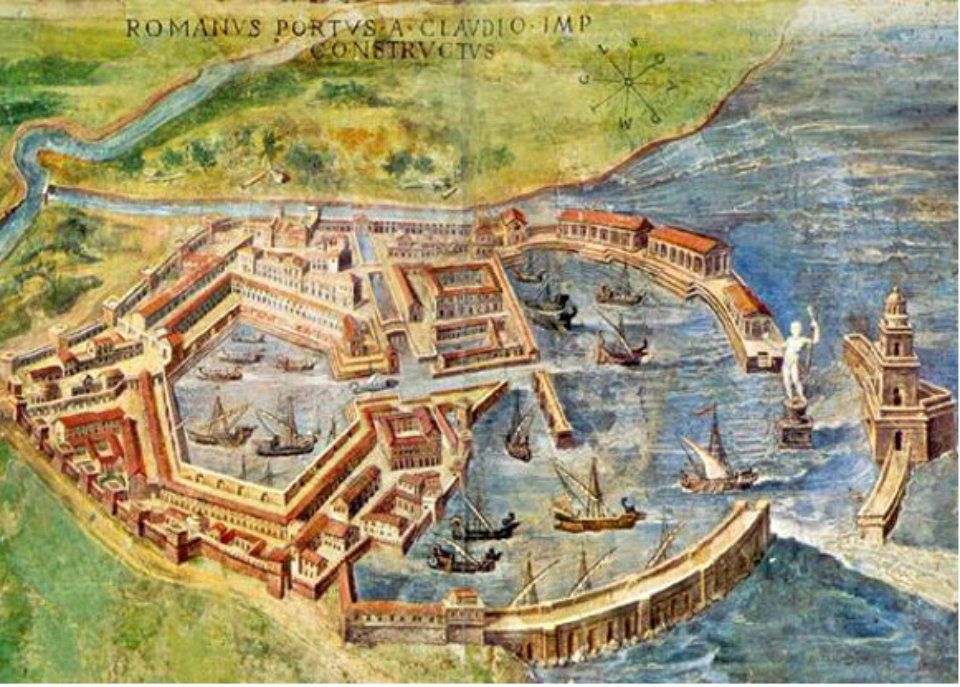The area
What to visit in Ostia:
The seafront, the pine forest, the Tiber estuary, the Roman marina
Lido di Ostia, which has always been a walking and free time destination for the Romans, presents some architectural excellences spread throughout the territory, ranging from the early 1900s and spreading throughout the century.
Speaking of Ostia, ancient history cannot be overlooked. Port town, place of exchange for the trade of Rome with the major ports of the Mediterranean contributing to the city and the Roman Empire, as evidenced by the archaeological site of Ostia Antica. The common thread between ancient and modern times is constituted by environmental issues, which see a series of natural and anthropogenic evolutions. What we can appreciate today is a territory largely made up of the contributions of the Tiber and the great reclamation carried out by the Ravenna labourers starting from 1800.
The presence of the dune system of Castelporziano and Capocotta with the humid areas behind it falling within the Presidential Reserve is still of a purely environmental nature. The protected marine area of Secche di Tor Paterno extends in the sea area in front of it, where it is possible to scuba dive.
Speaking of Ostia, ancient history cannot be overlooked. Port town, place of exchange for the trade of Rome with the major ports of the Mediterranean contributing to the city and the Roman Empire, as evidenced by the archaeological site of Ostia Antica. The common thread between ancient and modern times is constituted by environmental issues, which see a series of natural and anthropogenic evolutions. What we can appreciate today is a territory largely made up of the contributions of the Tiber and the great reclamation carried out by the Ravenna labourers starting from 1800.
The presence of the dune system of Castelporziano and Capocotta with the humid areas behind it falling within the Presidential Reserve is still of a purely environmental nature. The protected marine area of Secche di Tor Paterno extends in the sea area in front of it, where it is possible to scuba dive.
MEDIEVAL CASTLE OF JULIUS II
The medieval Castle of Julius II is located in a suburban area of the Roman Ostia and is located at the current entrance to the excavations and to the church of Saint Aurea.
The Castle was built on behalf of Cardinal Giuliano della Rovere (later Pope Julius II) in the centre of the Rocca in the medieval period, between 1483 and 1486, based on an original design by Baccio Pontelli.
The Castle was built on behalf of Cardinal Giuliano della Rovere (later Pope Julius II) in the centre of the Rocca in the medieval period, between 1483 and 1486, based on an original design by Baccio Pontelli.

Slide title
Write your caption hereButton

Slide title
Write your caption hereButton
ROMAN THEATRE OF ANCIENT OSTIA
The Roman theatre of Ostia was built in the Augustan age and remodeled at the end of the 2nd century.
In the Augustan age, the city experienced a strong expansion. At this age the theatre, in reticulated opera, is given, which constitutes a single complex with the adjoining square of the Corporations.
It was built in the area that in the Republican age had been delimited for public use by the urban praetor of Rome along the Tiber, east of the walls of the republican castrum.
In the Augustan phase, it could accommodate 4000 spectators.
In the Augustan age, the city experienced a strong expansion. At this age the theatre, in reticulated opera, is given, which constitutes a single complex with the adjoining square of the Corporations.
It was built in the area that in the Republican age had been delimited for public use by the urban praetor of Rome along the Tiber, east of the walls of the republican castrum.
In the Augustan phase, it could accommodate 4000 spectators.
ARCHAEOLOGICAL EXCAVATIONS AND THERMAL BATHS
The ruins of the city were excavated from the beginning of the 19th century. Together with the public monuments, numerous residential houses and productive structures have been preserved, making them an important testimony of ancient daily life.
The Baths of Neptune are a public spa complex in the Roman city of Ostia, built by Adriano and Antonino Pio and inaugurated in 139.
The Baths of Neptune are a public spa complex in the Roman city of Ostia, built by Adriano and Antonino Pio and inaugurated in 139.

Slide title
Write your caption hereButton

Slide title
Write your caption hereButton
ARCHAEOLOGICAL MUSEUM OF OSTIA
Inside the archaeological area, there is the Archaeological Museum of Ostia, where numerous finds from the entire archaeological area are collected.
The museum was commissioned by Pope Pius IX, who in 1865 had a fifteenth-century building used as a deposit to create a museum. Numerous archaeological finds were brought to light during excavations.
The museum was commissioned by Pope Pius IX, who in 1865 had a fifteenth-century building used as a deposit to create a museum. Numerous archaeological finds were brought to light during excavations.
THE PORTS OF CLAUDIUS AND TRAJAN
The ruins of the city were excavated from the beginning of the 19th century. Together with the public monuments, numerous residential houses and productive structures have been preserved, making them an important testimony of ancient daily life.
The Baths of Neptune are a public spa complex in the Roman city of Ostia, built by Adriano and Antonino Pio and inaugurated in 139.
The Baths of Neptune are a public spa complex in the Roman city of Ostia, built by Adriano and Antonino Pio and inaugurated in 139.

Slide title
Write your caption hereButton
Journey through Ostia's history and nature.
Contact us for more information
Lungomare Amerigo Vespucci, 6 - 00122 Lido di Ostia (RM)
T. +39 06 56470256 - info@sportingbeachroma.com





